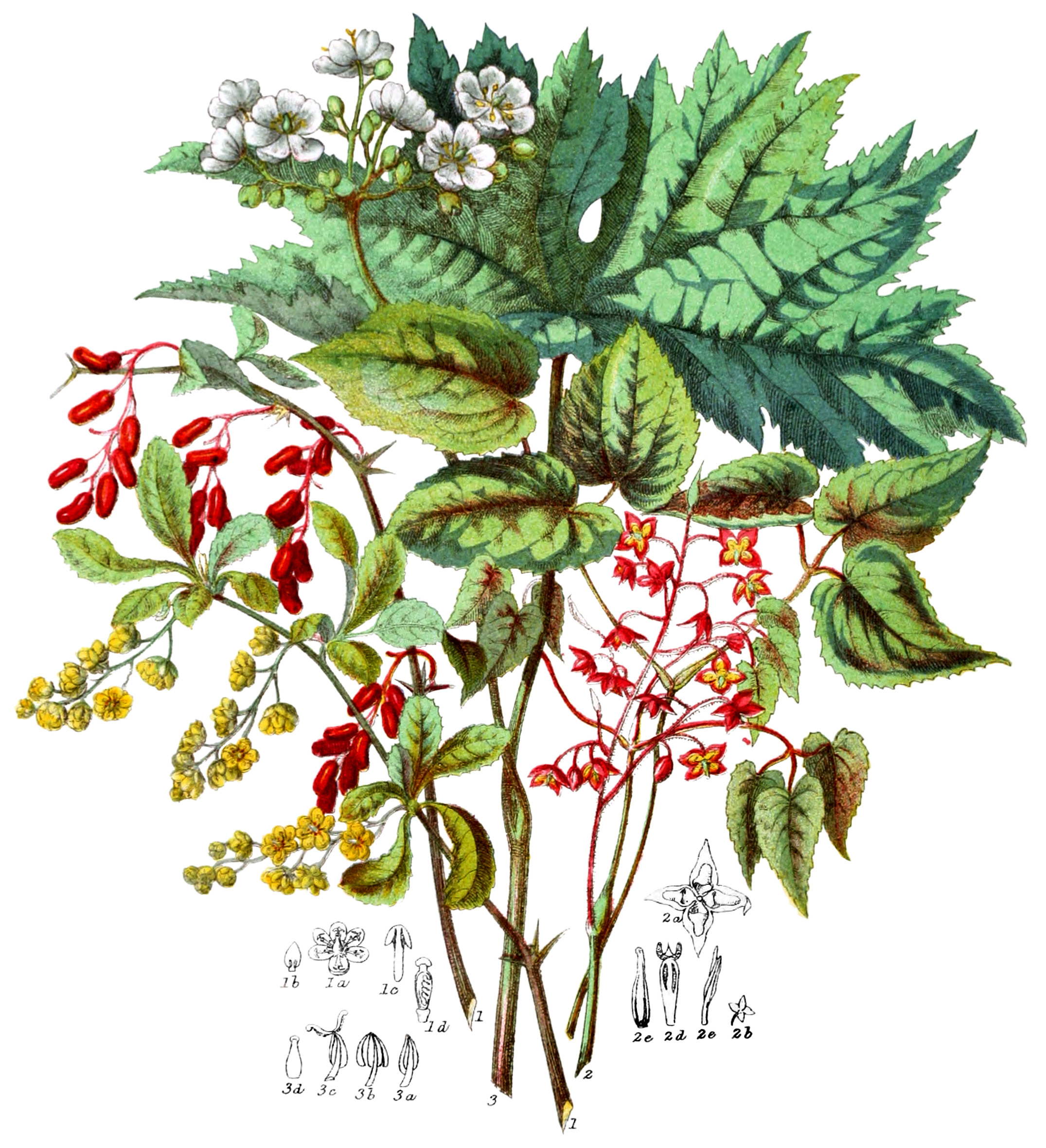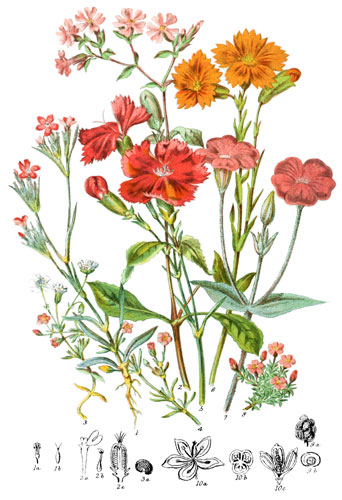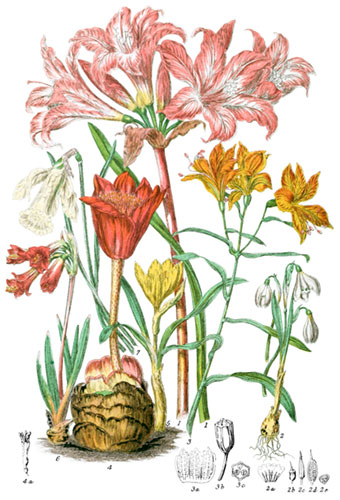Key characteristics
Shrubs and herbaceous plants, usually destitute of hairs, but often spiny. The leaves are alternate, compound, generally without stipules; those of the common Berberry and some other species appear to be simple leaves growing in clusters, but are jointed at the stalk, and are therefore compound leaves reduced to a single leaflet. The flowers are either solitary, branched, or in panicles; the sepals of the calyx are three, as in Diphylleia, four as in Epimedium, or six as in Berberis, with petal-like scales on the outside. The petals are the same in number as the sepals, or twice as many, having sometimes an appendage at the base in the interior. The stamens are equal in number to the petals, opposite to which they are placed; the anthers have two cells which open by valves from the lower part upwards, the same as in the Laurel tribe. The style is terminated by a circular stigma; the fruit is either a berry or a capsule, containing crustaceous or membranous seeds.
This Order is connected with Fumariaceæ and Vitaceæ.
Select plants in this order
Not all plants listed are illustrated and not all plants illustrated are listed.
- Berberis (1), which gives it name to this tribe, is so called in Arabia; the fibrous veins of the leaf are very tough, that which runs at the margin forms a small spine at the point of each serrature; at the base of the leaf and flower-stalks is a strong, triple spine, formed of the hardened ribs of imperfect leaves. The flowers have an unpleasant odour in spring, but are of elegant appearance, and are much restored to by bees and other insects. the filaments of the stamens possess considerable irritability; when slightly touched, they rise from the petals towards the stigma. The berries are so extremely acid, birds will seldom eat them, but when preserved with sugar they are made into jelly in some countries, and are likewise put into sugar-plums. At Verdun, and other towns in France, where bon-bons are the chief manufacture, they are much in request. The stem, branches, and roots yield a bright yellow dye, chiefly used in Poland to dye leather or linen. The Berberry is worthy to be classed among our ornamental shrubs, and is particularly so in autumn, when the drooping clusters of bright red berries remain for many weeks on the branches. Where it is seen growing luxuriously in favourable situations, as among the grey rocks that bound the Valley of Interlaken, or in Austria on the shores of the Danube, it cannot fail to attract the admiration of the traveller.
- B. asiaticus, growing on the Neilgherries, produces and excellent yellow die.
- The fruit of B. aristata, another Indian species, is dried in the sun, like raisins, and sent down to the plains.
- B. ilicifolia is a beautiful species, growing near the Straits of Magellan; three kinds of Berberis are abundant on the whole chain of the Andes.
- Epimedium is said to be so named by Dioscorides; the four sepals of the calyx soon fall off, the four petals are spreading and concave and upon each lies a hollow pouch-like nectary.
- The leaves of Epimedium alpinum (2) are at first tender and drooping, after the flowers are faded they acquire size and firmness. It is only seldom found in the north of England, and in Scotland, in the shelter of woods in hilly districts.
- Epimedium violaceum grows in Japan.
- Diphylleia cymosa is an herbacious plant, having only two leaves, as its name imports; the berries are blue when ripe.
- Nandina is an evergreen shrub in Japan and China, occasionally cultivated in English gardens; it bears panicles of greenish flowers, and berries about the size of peas.
- Leontice Leontopetalum is a specimen of the herbacious class in this Order, with flowers growing singly at the base of the leaf-stalk: the root is said to be used medicinally by the Turks of the Levant, where it grows.
- Bongardia belongs also to the East, the tubers are sometimes roasted and eaten in Persia.
- Caulophyllum* thalictroides is a delicate little plant of North America; its principal singularity consists in being one of the few instances of a seed destitute of the usual covering: the roots are said to possess medicinal properties, and the seeds have been employed as a substitute for coffee.
Locations
These plants are disposed, chiefly in mountainous places, over the temperate parts of the northern hemisphere; rather abundantly in the northern provinces of India. In South America they are found as far south as the Straits of Magellan; none yet have been discovered in Africa, Australia, or the South Sea Islands.
Legend
- Berberis vulgaris, Common Berberry. England.
- Flower.
- Petal.
- Stamen.
- Pistil.
- Epimedium alpinum, Alpine Barren-wort. England.
- Flower magnified.
- Calyx.
- Stamen.
- Anther, open.
- Pistil.
- Diphylleia cymosa, Blueberried Diphylleia. North America.
- Stamen.
- Anther, open.
- Anther, valves recurved.
- Pistil.
*Canlophyllum was spelled “Caulophyllum” in the original description.
Explore more
Posters
Decorate your walls with colorful detailed posters based on Elizabeth Twining’s beautiful two-volume set from 1868.
Puzzles
Challenge yourself or someone else to assemble a puzzle of all 160 botanical illustrations.





